10 Best STIHL Chainsaws of 2024: Forestry Choice
- August 14, 2023
- 4 comment
The world of chainsaws has seen numerous advancements and innovations over the years, but when it comes to trusted quality and performance, STIHL stands out as a leading brand. Whether you’re a professional lumberjack, an ardent DIY enthusiast, or someone who needs to trim trees occasionally, STIHL has a chainsaw tailored to your needs.

The year 2024 has been particularly noteworthy in terms of the range and capabilities of STIHL chainsaws on offer. These machines blend the right mix of power, durability, and user-friendliness. In this guide, we dive deep into the 10 best STIHL chainsaws of 2024, presenting the top choices for the forestry sector. From heavy-duty monsters to more compact and manageable models, you’re bound to find a tool that will elevate your lumber work to new heights.
STIHL Chainsaw Features: What We Focus On
- STIHL’s non-battery chainsaws deploy a two-cycle fuel system, requiring manual pulling for activation. A model that struggles to start may warrant servicing. Professionals often have a seamless start experience, but for those frequently toggling the chainsaw, STIHL’s EFI models, though pricier, might be apt.
- Regularly adjusting the chainsaw bar is pivotal since new chains tend to stretch. Ensure frequent tightening during the initial uses. If the stihl chain saw tightens without warning, it’s likely due to insufficient bar oiling. Professionals rely on the scrench—a unique tool blending a screwdriver and wrench. Tool-free tensioners, though common, aren’t our top choice for professional settings. They might compromise long-term reliability.
Pro Tip: Release the chain tension at the day’s end, especially during cold weather, to prevent undue tightening and potential wear. - Losing bar nuts in the field isn’t rare. Notably, Stihl and Husqvarna often have captive nuts, which Echo might lack. Always keep spare screnches and nuts in your vehicle.
Pro Tip: Always have an extra nut handy. - Most chainsaw manufacturers source their bars and chains, with Oregon being a frequent choice. However, during our visits, we observed Stihl producing their chainsaw guide bars. In our studies, 3/8″ pitch, and 0.050″ gauge chains are prevalent, but some saws prefer the .325-inch pitch for faster cutting.
- Effective lubrication with bar and chain oil is imperative. Any oil application features preventing leaks are commendable. Ensuring visible oil levels is crucial. We also value ergonomic and spill-proof oil refill systems.
- Chain brakes and safety trigger locks should be efficient and user-friendly. The chain brake should be easily activated during kickbacks. Also, the handguard position and chain catch pin are essential safety markers.
- Chainsaws are furnished with bucking spikes or felling spikes to boost cutting efficiency. These spikes anchor the saw, allowing it to seamlessly glide through the cut.
- Balance and comfortable handles, combined with weight distribution, contribute to a chainsaw’s overall ergonomic design. Stihl chainsaws, renowned for their power, also impress with their balance. Handle design, trigger comfort, and weight also play significant roles in user comfort.
Chain Test Set-up and Insights
Drawing from our rich history of testing chainsaws on diverse wood types such as pine, cedar, and oak, we’ve executed a wide range of tasks—from limbing small branches to felling sizable trees of up to 3 feet in diameter and post-hurricane debris removal.
While our inclination is towards testing chainsaws on green wood—given that’s their primary purpose—we avoid dry construction lumber where possible.
Determining Cutting Potency
While motor size undeniably influences a chainsaw’s capacity, hands-on testing remains pivotal. Our endorsements stem either from firsthand experience or meticulous research into professional feedback. Notably, features monitoring fuel and oxygen, ensuring the chainsaw functions efficiently despite filter clogging, can uplift performance. In specific scenarios, a 55cc chainsaw from a known brand might overshadow chainsaws with bigger engines in practical performance. This underlines the importance of comprehensive testing.
Unbiased Chain Comparisons
For a fair assessment, we standardize the type of chain used. The chain type can sway multiple performance attributes—from cutting speed to vibration and kickback risks. Witnessing the varied outcomes of different chains on the same chainsaw can be quite enlightening.
Best STIHL Chainsaw List:
- STIHL MS 170
- STIHL MS 250
- STIHL MS 261 C-M
- STIHL MS 362 C-M
- STIHL MS 441 C-M Magnum
- STIHL MS 500i
- STIHL MS 880 Magnum
- STIHL MSA 200 C-B
- STIHL MS 150 C-E
- STIHL MS 180 C-BE
Let’s Delve Deeper Into These Best STIHL Chainsaws
1. STIHL MS 170
Specifications
- Displacement: 30.1 cc
- Engine power: 1.4 kW (1.7 bhp)
- Power source: Gasoline
- Powerhead weight: 3.9 kg (8.6 lb)
- Fuel capacity: 8.5 oz (247 ml)
- Chain oil capacity: 4.9 oz (142 ml)
- Bar length: 12 to 16 inches
- Chain type: STIHL Oilomatic PM3
- Chain pitch: 3/8″ P
- Vibration level left/right (m/s²): 5.2/5.5
- Sound pressure level (dB(A): 100
- Sound power level (dB(A): 111
This model can be best described as the ideal entry point into the world of stihl chainsaws. Its compact nature might deceive many, but beneath its streamlined design lies a competent machine. Its light weight ensures maneuverability, allowing homeowners to confidently tackle pruning or trimming chores around their property. The addition of the anti-vibration system is a thoughtful touch, ensuring that even prolonged usage doesn’t lead to unnecessary discomfort. For many, the MS 170 has become an indispensable part of their gardening toolkit, proving its mettle time and again.
Pros
- As an entry-level chainsaw STIHL affordable solution for those new to the world of chainsaws.
- Ideal for users who need a chainsaw that’s easy to maneuver and store.
- Despite its compactness, it packs enough power to handle light pruning, trimming, and small-scale cutting.
- This feature ensures that the user doesn’t experience undue fatigue or discomfort, making it suitable for prolonged use.
- Given its target audience (mostly beginners), the MS 170 is designed to be user-friendly in terms of upkeep.
Cons
- While it’s powerful for its size, the MS 170 isn’t designed for heavy-duty tasks such as felling large trees.
- The shorter bar length, typical of entry-level chainsaws, restricts the size of wood it can effectively cut.
- The engine might not provide enough torque for denser and harder wood.
- Being an entry-level model, it might not come equipped with some of the advanced features present in the more expensive models.
2. STIHL MS 250
Specifications
- Engine Displacement: 45.4 cc
- Power Output: 2.2 kW
- Weight: 4.6 kg (Powerhead only)
- Fuel Capacity: 470 cc
- Chain Oil Capacity: 200 cc
- Guide Bar Lengths: 16″ to 18″
- Power Source: Gas
- Chain Pitch: .325″
- Anti-Vibration System: Yes
- Chain Brake: Yes
- Automatic Bar and Chain Oiler: Yes
When your tasks demand something more robust, the MS 250 steps in. This chainsaw STIHL represents the midpoint between casual use and professional-grade performance. Whether it’s prepping firewood for the winter or managing a slightly wilder garden, the MS 250 offers the extra horsepower needed. Its quick chain adjuster is a notable feature, especially for those who might be hesitant about chainsaw maintenance. It demystifies the process, making chain adjustments straightforward and hassle-free.
Pros
- Compared to its younger sibling, the MS 250 brings a significant bump in power, allowing it to handle more demanding tasks.
- It’s adept at handling a variety of tasks, making it suitable for homeowners with larger landscapes or more diverse cutting needs.
- This feature facilitates easy chain tensioning without the need for tools, making it particularly convenient for those unfamiliar with chainsaw adjustments.
- Built for resilience, the MS 250 is designed to withstand the rigors of regular use.
- Offering a bridge between beginner and professional chainsaws, the MS 250 provides a lot of value for its price point.
Cons
- While it’s more powerful than the MS 170, it still might not be enough for heavy-duty professional tasks like large tree felling.
- Being more robust, it’s also slightly heavier, which might be a concern for some users during prolonged use.
- Some users have noted that the MS 250 can be less fuel-efficient compared to more advanced models or those with fuel-saving technologies.
- With increased power can come increased noise, potentially making it louder than some of the smaller models.
3. STIHL MS 261 C-M
Specifications
- Engine: 2-stroke, single cylinder
- Engine displacement: 50.2 cc
- Maximum power: 3.0 kW (4.0 hp)
- Maximum torque: 3.3 Nm (2.4 lb-ft)
- Fuel consumption: 440 g/kWh (0.594 lb/hp-hr)
- Oil consumption: 0.22 L/h (0.037 US gal/hr)
- Weight: 10.8 kg (23.8 lb)
- Guide bar length: 40 cm (16 in) 45 cm (18 in) or 50 cm (20 in)
- Saw chain: .325″ pitch, 0.050″ gauge
This is where art meets engineering. The MS 261 C-M is a symphony of power and precision, backed by cutting-edge technology. The M-Tronic electronic engine is its crown jewel, ensuring that the chainsaw adjusts itself to offer optimal performance, irrespective of external conditions. For professionals who grapple with varied environments, this chainsaw emerges as a reliable partner, making logging an exercise in finesse.
Pros
- Designed for medium-scale logging, it packs enough punch to handle demanding tasks with ease.
- This state-of-the-art feature ensures consistent and optimal performance under varying conditions, resulting in smoother operation and reduced fuel consumption.
- The air filtration system prolongs the lifespan of the air filter, reducing the frequency of replacements and ensuring cleaner combustion.
- Allows for quick and tool-free chain adjustments, making field tasks more streamlined.
- As a professional-grade tool, the MS 261 C-M is built for longevity and can withstand regular intensive use.
- The M-Tronic system not only optimizes performance but also ensures more efficient fuel consumption.
Cons
- Being laden with advanced features and catering to professionals, the MS 261 C-M comes at a steeper price compared to the homeowner-centric models.
- With advanced features may come a slight learning curve, especially for users transitioning from more basic chainsaws.
- Professional chainsaws often have heftier builds. Some users might find the MS 261 C-M heavier compared to smaller models.
- For users with minimal chainsaw needs, the advanced features and power of the MS 261 C-M might be more than necessary.
4. STIHL MS 362 C-M
Specifications
- Engine: 2-stroke, single cylinder
- Engine displacement: 59.0 cc
- Maximum power: 3.6 kW (4.8 hp)
- Maximum torque: 4.0 Nm (2.9 lb-ft)
- Fuel consumption: 410 g/kWh (0.562 lb/hp-hr)
- Oil consumption: 0.25 L/h (0.045 US gal/hr)
- Weight: 10.3 kg (22.7 lb)
- Guide bar length: 40 cm (16 in) or 45 cm (18 in) or 50 cm (20 in)
- Saw chain: .325″ pitch, 0.050″ gauge
The term ‘workhorse’ finds its true embodiment in the MS 362 C-M. Crafted for the professionals who won’t settle for anything but the best, this chainsaw is a fusion of raw power and durability. Whether felling mature trees or processing thick logs, the MS 362 C-M responds with gusto. And in a world increasingly conscious about its ecological footprint, its reduced emission technology is a commendable step forward.
Pros
- Designed for professional forestry work, the MS 362 C-M delivers consistent power suitable for felling large trees and processing logs.
- In line with global eco-friendly initiatives, the chainsaw boasts lower emissions, which is beneficial for both the environment and the user.
- Enhanced engine technology ensures optimal fuel consumption, making it both powerful and economical over long uses.
- Reduces user fatigue during extended operations, ensuring comfortable and safe usage.
- Built for the rigors of professional work, it’s designed to withstand intense, regular use.
- It Simplifies chain tensioning, especially crucial in professional settings where time is of the essence.
Cons
- With its advanced features and professional-grade performance, the MS 362 C-M comes with a higher price tag.
- As with many professional-grade chainsaws, its robust construction results in a heftier weight, which might be a concern during prolonged use for some.
- The capabilities of the MS 362 C-M may be excessive for homeowners or users with less demanding tasks.
- The advanced features might require a learning curve, especially for those transitioning from simpler chainsaws.
5. STIHL MS 441 C-M Magnum
Specifications
- Engine displacement: 70.7 cc (4.3 cu. in.)
- Engine power: 4.2 kW (5.6 bhp)
- Powerhead weight: 6.6 kg (14.6 lbs.)
- Fuel capacity: 725 cc (24.5 oz.)
- Chain oil capacity: 360 ccs (12.2 oz.)
- OILOMATIC® chain: 3/8″ RS3
- Guide bar lengths (recommended ranges): 40 to 80 cm (16″ to 32″)
- STIHL ROLLOMATIC® E Super
- Power source: Gas
When challenges scale up, the Magnum series steps in. The MS 441 C-M is an ode to unmatched power and endurance. Its high torque output ensures that even the most daunting of forestry tasks are handled with aplomb. When wielding the Magnum, users often feel an unmatched sense of control and capability.
Pros
- As part of the Magnum series, the MS 441 C-M is designed for the most demanding tasks, such as felling large trees or handling prolonged milling sessions.
- Ensures efficient cutting even in dense woods, reducing the time required for tasks.
- rue to the Magnum name, this model is built to last, capable of withstanding the challenges of professional forestry work.
- Ensures optimal performance and fuel efficiency, adjusting automatically to environmental conditions.
- Prolongs the life of the engine and reduces maintenance intervals by keeping dust and debris at bay.
- Minimizes user fatigue and provides a more comfortable experience during prolonged usage.
Cons
- The advanced features and unmatched performance come at a cost, positioning the MS 441 C-M at a higher price range.
- Designed for robustness and power, its weight might be challenging for some users over extended periods.
- Given its power and design, using the MS 441 C-M for light tasks might be overkill.
- While it boasts a powerful engine, the fuel consumption can be on the higher side, especially under heavy loads.
6. STIHL MS 500i
Specifications
- Powerhead weight: 13.9 lbs.
- Guide bar length (recommended): 25 in.
- OILOMATIC® chain: 3/8″ RS3
- Chain oil capacity: 11 oz.
- Engine power: 6.7 bhp
- Fuel capacity: 26.5 oz.
- Displacement: 79.2 cc
Innovation is at the heart of the MS 500i. As the world’s pioneering chainsaw featuring electronic fuel injection, it’s a testament to what the future of logging looks like. Beyond its rapid acceleration, it promises consistency in performance that few can rival. In the MS 500i, we see a glimpse of STIHL’s vision for the next generation of chainsaws.
Pros
- This revolutionary feature ensures rapid acceleration from a cold start, delivering instant power when needed.
- The EFI system optimizes fuel delivery, ensuring that the chainsaw uses just the right amount for the task, reducing waste.
- Despite the incorporation of advanced tech, the design remains ergonomic, providing an excellent balance between power and user comfort.
- The rapid acceleration translates to an impressive chain speed, ensuring swift and efficient cuts.
- This system reduces the intake of dusty air, prolonging engine life and reducing the frequency of maintenance.
- The EFI system ensures optimal combustion, resulting in fewer emissions and a more environmentally friendly operation.
Cons
- The groundbreaking technology in the MS 500i positions it at a higher price point.
- While EFI offers many benefits, it also introduces an element of complexity that might require a learning curve or specialized maintenance knowledge.
- The MS 500i’s advanced features and power might be excessive for homeowners or occasional users.
- The reliance on electronic systems might raise concerns about long-term durability or the need for specialized repairs if issues arise.
7. STIHL MS 880 Magnum
Specifications
- Engine displacement: 121.6 cc (7.42 cu. in.)
- Engine power: 7.3 kW (9.9 bhp)
- Powerhead weight: 11.3 kg (24.9 lbs.)
- Fuel capacity: 1300 cc (44.0 oz.)
- Chain oil capacity: 700 cc (23.7 oz.)
- OILOMATIC® CHAIN: .404″ RM, RS
- POWER SOURCE: Gas
There are tasks, and then there are challenges. For the latter, the MS 880 Magnum is crafted. Its sheer power is awe-inspiring, designed to tackle the mammoths of the tree world. Its robust construction ensures that it isn’t just about raw power, but also about lasting through the toughest of conditions. When faced with gargantuan tasks, users can bank on the Magnum to not just deliver but to excel.
Pros
- The MS 880 Magnum stands as one of the most powerful chainsaws in the market, aptly designed for the most demanding tasks.
- Built to last, its durable design ensures it can handle the rigors of professional forestry work and heavy-duty applications.
- Despite its size and power, it’s designed with user comfort in mind. Features like the anti-vibration system reduce fatigue during extended operations.
- Provides consistent power even in hard, dense woods, ensuring efficient and swift cuts.
- These ensure longer run times, reducing the frequency of refills during extended sessions.
- Its power and design make it suitable for a variety of tasks, from felling large trees to milling.
Cons
- As one of the heaviest chainsaws in STIHL’s lineup, some users might find it challenging to manage, especially over extended periods.
- With great power comes a higher price. The MS 880 Magnum is an investment, reflecting its capabilities.
- Given its power and weight, it might not be suitable for beginners or those unfamiliar with handling such powerful equipment.
- Due to its powerful engine, it can consume fuel relatively quickly, especially when operated at full capacity.
8. STIHL MSA 200 C-B
Specifications
- Engine displacement: 38.2 cc
- Engine power: 2.5 kW (3.4 bhp)
- Powerhead weight: 5.9 kg (13.0 lbs.)
- Battery capacity: 2 x 36 V 5.2 Ah
- Run time: Up to 100 minutes (with 2 x 36 V 3.0 Ah batteries)
- Chain speed: Up to 24 m/s
- Guide bar length: 35 cm (14 in)
- Chain: .325″ RM
- POWER SOURCE: Battery
In the heart of the city, where the sound of a chainsaw may not be welcomed, the MSA 200 C-B provides a quiet yet potent solution. This battery-operated tool guarantees immediate power without the accompanying noise. It’s ideal for urban residents or those operating in areas sensitive to noise, demonstrating that cordless doesn’t equate to compromise. Moreover, when it comes to the best stihl chainsaw for cutting firewood, the STIHL wood boss stands out for its efficiency and ease of use.
Pros
- Being battery-powered, the MSA 200 C-B offers the freedom to work without the hassle of cords or the need for fuel.
- Unlike gas-powered chainsaws, this model operates with significantly less noise, making it ideal for residential areas or noise-sensitive environments.
- Without the traditional internal combustion engine, there’s no need for oil changes, spark plug replacements, or carburetor adjustments.
- Being electric, it produces zero emissions, making it environmentally friendly and safer for indoor or enclosed area use.
- Allows for fast and tool-free chain tensioning and assembly.
- Without the weight of a fuel tank and engine components, it’s more comfortable to handle and maneuver, especially for extended periods.
- Provides efficient power delivery and reduces wear and tear, extending the tool’s lifespan.
Cons
- While it eliminates the need for fuel, the chainsaw’s operation is dependent on battery life. Once depleted, you’ll have to wait for a recharge or have spare batteries on hand.
- While it’s robust for an electric model, it might not match the raw power of larger gas-powered chainsaws. It’s best for lighter tasks and not heavy-duty logging.
- Battery-powered tools often come with a higher upfront cost, especially if the battery and charger are sold separately.
- Over time, rechargeable batteries can lose their ability to hold a full charge, which may necessitate replacements.
9. STIHL MS 150 C-E
Specifications
- Engine displacement: 23.6 cc
- Engine power: 1.5 kW (2.0 bhp)
- Powerhead weight: 6.2 lbs.
- Guide bar length (recommended): 12 in.
- OILOMATIC® CHAIN: 1/4″ PM3
- Chain oil capacity: 5.07 oz.
- Fuel capacity: 6.76 oz.
- POWER SOURCE: Gas
Precision finds its true ally in the MS 150 C-E. It’s a chainsaw that understands the nuances of detailed work. Be it delicate pruning or in-tree tasks, the MS 150 C-E offers unparalleled control. Its lightweight design ensures that users can focus on the task at hand, while its power ensures that the job gets done. Arborists, in particular, would find this model an extension of their skilled hands.
Pros
- Being one of the lightest in STIHL’s lineup, the MS 150 C-E ensures easy maneuverability, particularly when working in trees or handling precise tasks.
- Tailored for intricate tasks, it offers a controlled cutting experience, especially useful for detailed pruning.
- Provides a comfortable grip, reducing user fatigue during prolonged usage.
- Includes an inertia-activated chain brake, reducing the risk of injury during unexpected kickbacks.
- The chainsaw starts effortlessly, eliminating the need for a strong pull on the starter rope.
- Its compact engine design ensures optimized fuel consumption, reducing costs and emissions.
- Reduces user fatigue and enhances comfort during operation.
Cons
- Given its design for precision tasks, it may not be suitable for heavy-duty felling or bucking of large logs.
- Due to its compact size, the fuel tank may require more frequent refills during extended sessions.
- Despite being a smaller chainsaw, the advanced features and brand reputation can place it at a premium price compared to other compact models.
- While it boasts advanced features, like all chainsaws, it requires regular maintenance to ensure peak performance.
10. STIHL MS 180 C-BE
Specifications
- Engine displacement: 31.8 cc
- Engine power: 2.0 kW (2.7 bhp)
- Powerhead weight: 7.3 lbs.
- Guide bar length (recommended): 16 in.
- OILOMATIC® CHAIN: .325″ RM
- Chain oil capacity: 8.5 oz.
- Fuel capacity: 11.2 oz.
- POWER SOURCE: Gas
For the everyday user, the MS 180 C-BE is a dependable companion always by their side. It’s versatile, ensuring that a range of tasks, from firewood preparation to garden management, are handled with ease. Its user-centric features, like the Easy2Start system, showcase STIHL’s commitment to making professional-grade tools accessible to all.
Pros
- Designed for a range of tasks, from trimming to moderate felling, making it ideal for homeowners with varying needs.
- This feature ensures a hassle-free start-up without the vigorous yanking associated with traditional pull starts.
- Minimizes vibrations, enhancing user comfort and reducing fatigue during prolonged usage.
- Allows for easy tool-free chain tensioning, making field adjustments a breeze.
- Its design ensures easy maneuverability, making it suitable for users of various skill levels.
- Equipped with a chain brake and handguard, it prioritizes user safety during operation.
- Provides a good balance of performance and affordability, making it a solid choice for homeowners.
Cons
- While versatile, it’s not designed for large-scale felling or professional logging. Given its homeowner-targeted design, it may lack the power needed for harder woods or more demanding projects.
- Some parts are made of plastic, which might not be as durable as metal components in the long run.
- Some users might find them a bit tricky to handle or prone to wear over time.
Conclusion
The STIHL chainsaw lineup of 2024 is a testament to the brand’s commitment to catering to diverse needs, from the casual homeowner to the dedicated forestry professional. Each model, starting from the lightweight MS 170 to the power-packed MS 880 Magnum, has been meticulously designed to offer optimum performance for its intended use. While models like the MS 170 and MS 250 provide homeowners with reliable tools for everyday tasks, professional-grade variants such as the MS 441 C-M Magnum and MS 500i redefine the boundaries of power and innovation. Additionally, the eco-conscious MS 362 C-M highlights STIHL’s vision for sustainable forestry. The MSA 200 C-B offers a nod to the urban user, balancing power with noise sensitivity. Whether it’s precision tasks with the MS 150 C-E or versatile chores with the MS 180 C-BE, STIHL ensures that every user finds a chainsaw tailored to their needs. In essence, the 2024 lineup underscores STIHL’s legacy of combining craftsmanship with innovation, promising a tool for every task and a solution for every challenge.
Looking for a STIHL Dealer Near Me? Find One Here with the STIHL Dealer Locator!
Related Articles:
Frequently Asked Question
- What makes the STIHL MS 500i a revolutionary chainsaw in the market?
The MS 500i stands out as the world’s first chainsaw featuring electronic fuel injection, ensuring rapid acceleration and enhanced fuel efficiency, a testament to STIHL’s innovation. - Why is the MS 170 often considered an ‘entry-level’ chainsaw?
The MS 170 is lightweight and tailored for light tasks like pruning and trimming, making it a suitable introductory chainsaw for beginners or homeowners. - How does the M-Tronic electronic engine system in the MS 261 C-M enhance performance?
The advanced M-Tronic system automatically adjusts the air/fuel mixture, ensuring optimal engine performance, quick startup times, and consistent power delivery across different environmental conditions. - How does the MS 362 C-M contribute to environmental sustainability?
The MS 362 C-M incorporates reduced emission technology, emphasizing STIHL’s commitment to producing tools that minimize its ecological footprint. - In what scenarios is the MS 441 C-M Magnum most beneficial?
Designed for raw power and durability, the MS 441 C-M Magnum is most effective in heavy-duty forestry tasks, like felling large trees and enduring prolonged milling sessions. - How does the MS 880 Magnum differentiate itself in terms of power?
The MS 880 Magnum is known for its immense power and rugged construction, making it capable of handling the toughest logging tasks and dealing with colossal logs. - Why is the STIHL MSA 200 C-B a unique proposition in urban settings?
Being a battery-powered chainsaw, the MSA 200 C-B is not only quiet, reducing noise pollution, but it also provides a potent cutting performance, ideal for urban environments. - For what specific tasks is the MS 150 C-E best suited?
The MS 150 C-E, with its precision and lightweight design, is tailored for detailed tasks like intricate pruning, and in-tree work, and is a favorite among tree surgeons and arborists. - How does the Easy2Start system in the MS 180 C-BE benefit users?
The Easy2Start system reduces the effort required to start the chainsaw, making it a user-friendly experience, especially for those who might not use chainsaws frequently. - Which chainsaw from the 2024 lineup would be best for a homeowner with occasional trimming and firewood-cutting tasks?
While several models could fit the bill, the MS 180 C-BE is especially suited for homeowners due to its versatility, user-friendly features, and reliability for diverse tasks. - Where Can I Find STIHL Chainsaws for Sale?
You can purchase STIHL chainsaws at authorized STIHL dealers or Check out our Marketplace.
What are your insights on the 10 Best STIHL Chainsaws of 2024? Share your personal experiences and opinions in the comments section below! We’d love to hear from you.

David Murray
Forestry AuthorI'm David Murry, a forestry equipment specialist with a focus on chainsaw operation. With over 13 years of experience, I've honed my skills in operating and maintaining a wide range of machinery, from chainsaws to log splitters. My passion for the outdoors and commitment to sustainable forestry drive my work, which emphasizes safety, efficiency, and staying updated with industry advancements. Additionally, I'm dedicated to sharing my expertise and promoting environmental awareness within the forestry community.
4 comments
I have a stilth MS 180 chainsaw and have problems with the metal studs which hold the chain gaurd in place, when i screw the nuts onto the studs they turn in the plastic housing and don't tighten. A massive design fault, you can't have metal studs screwed into plastic housing and expect nuts to grip the housing and be secure. Very dissapointed with this chainsaw.
Dave Power
October 29, 2023 7:52 pmThe 441 shouldn’t be on this list. The 500 weighs less, puts out more power. 500 made the 441 and 462 obsolete.
David DeJong
October 22, 2023 7:16 amI have a 462 and it kicks it



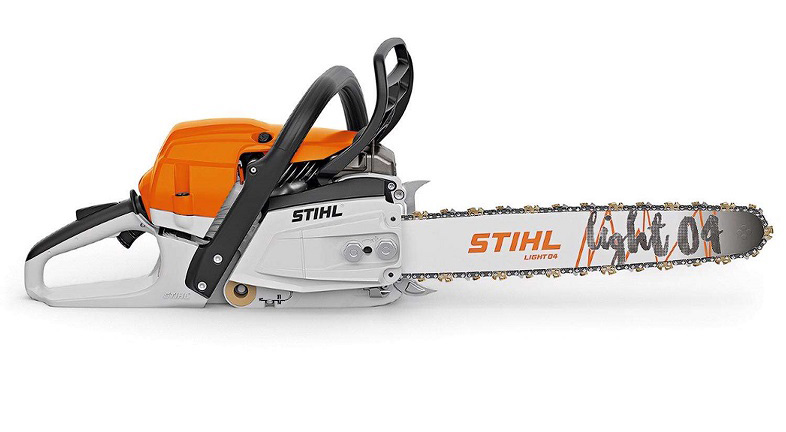
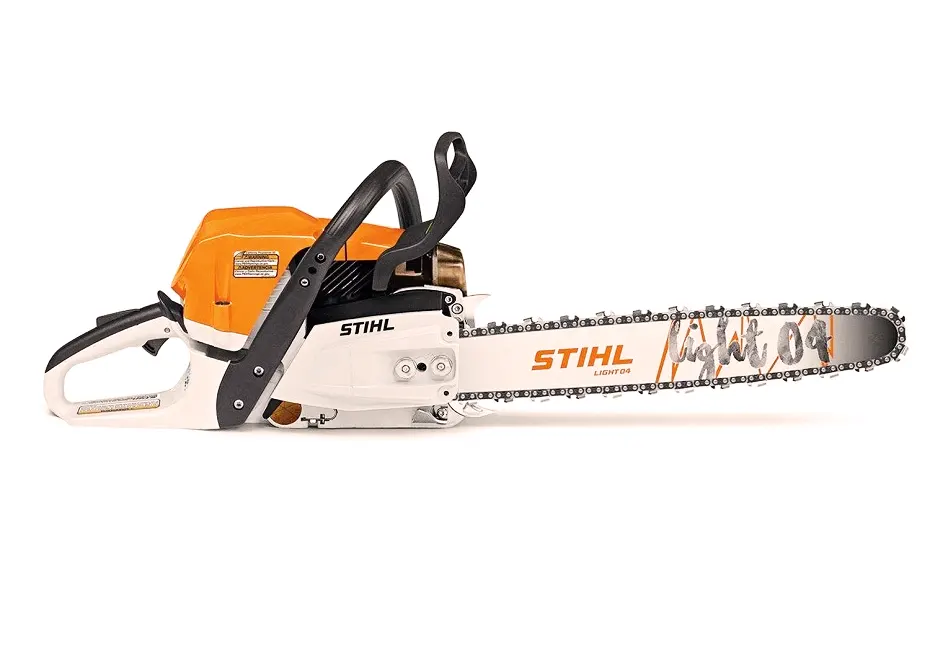

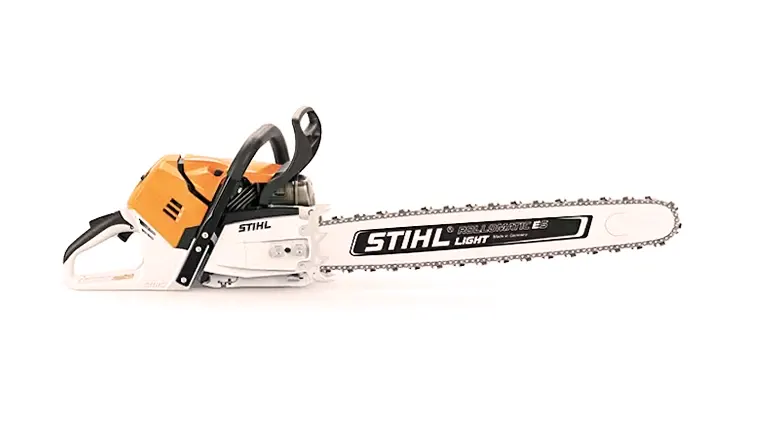


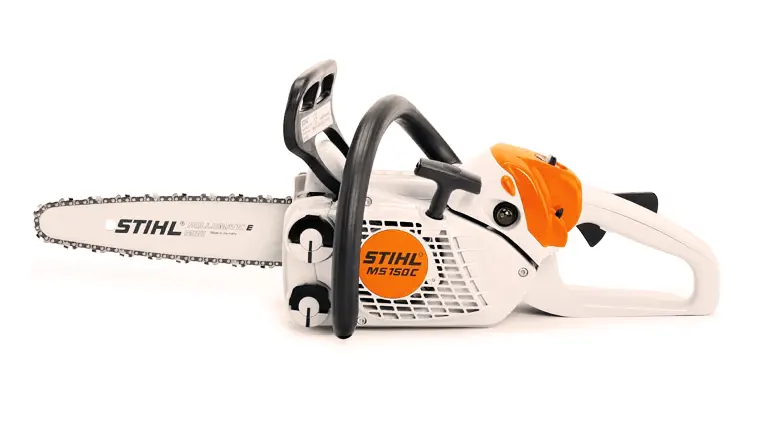










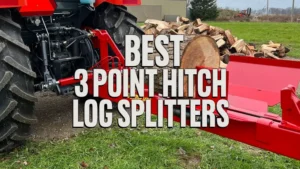


Have a 500i great saw ,can't find any fault with it,
Bernard
December 2, 2023 7:54 pm